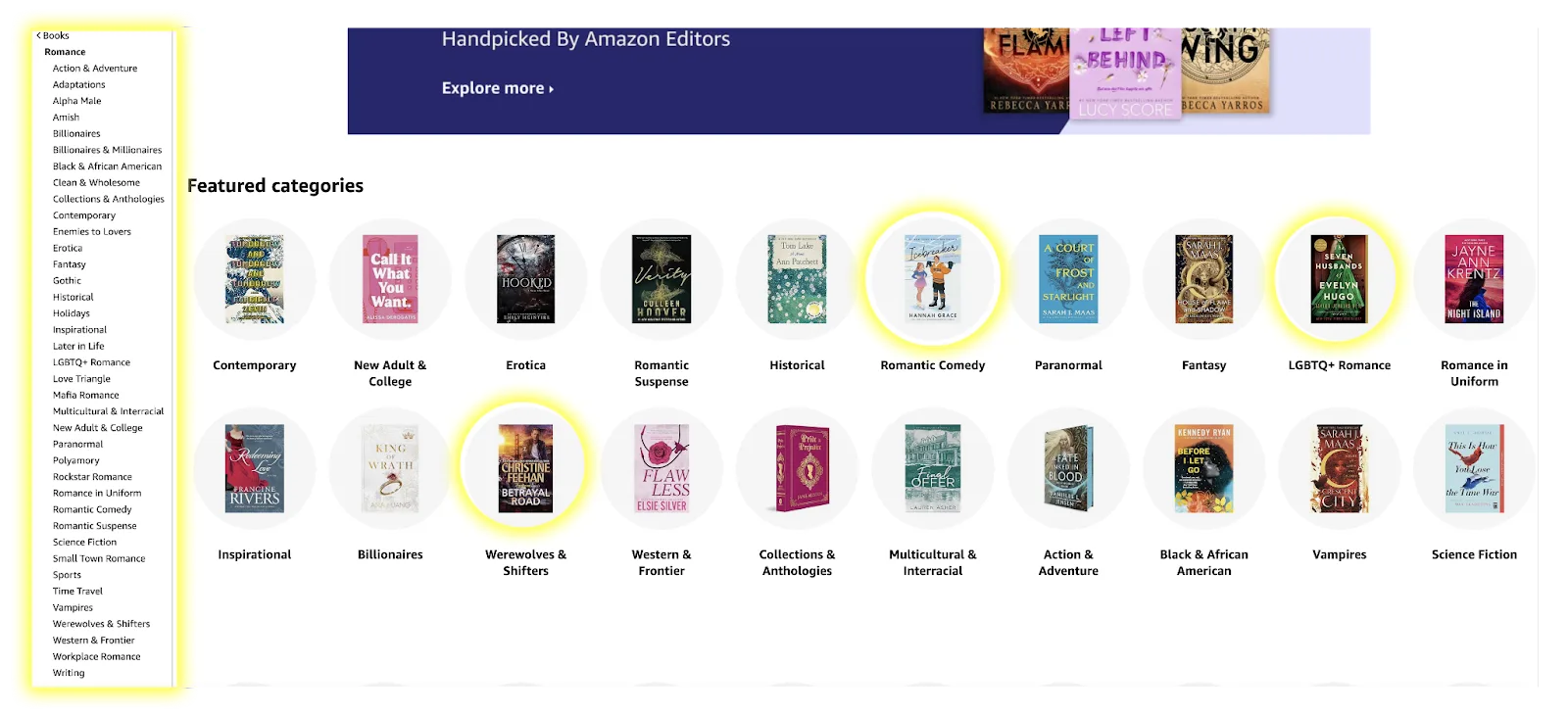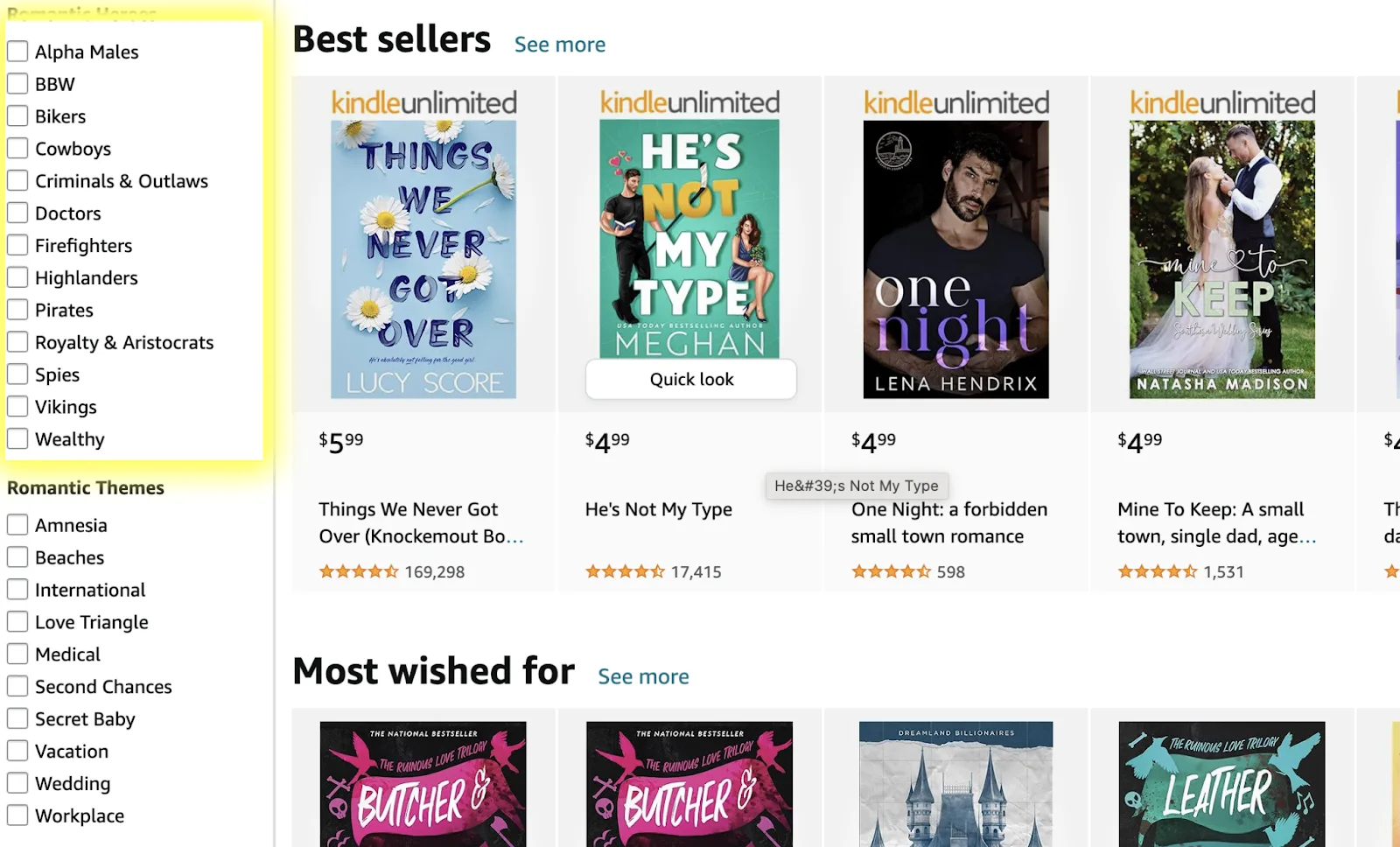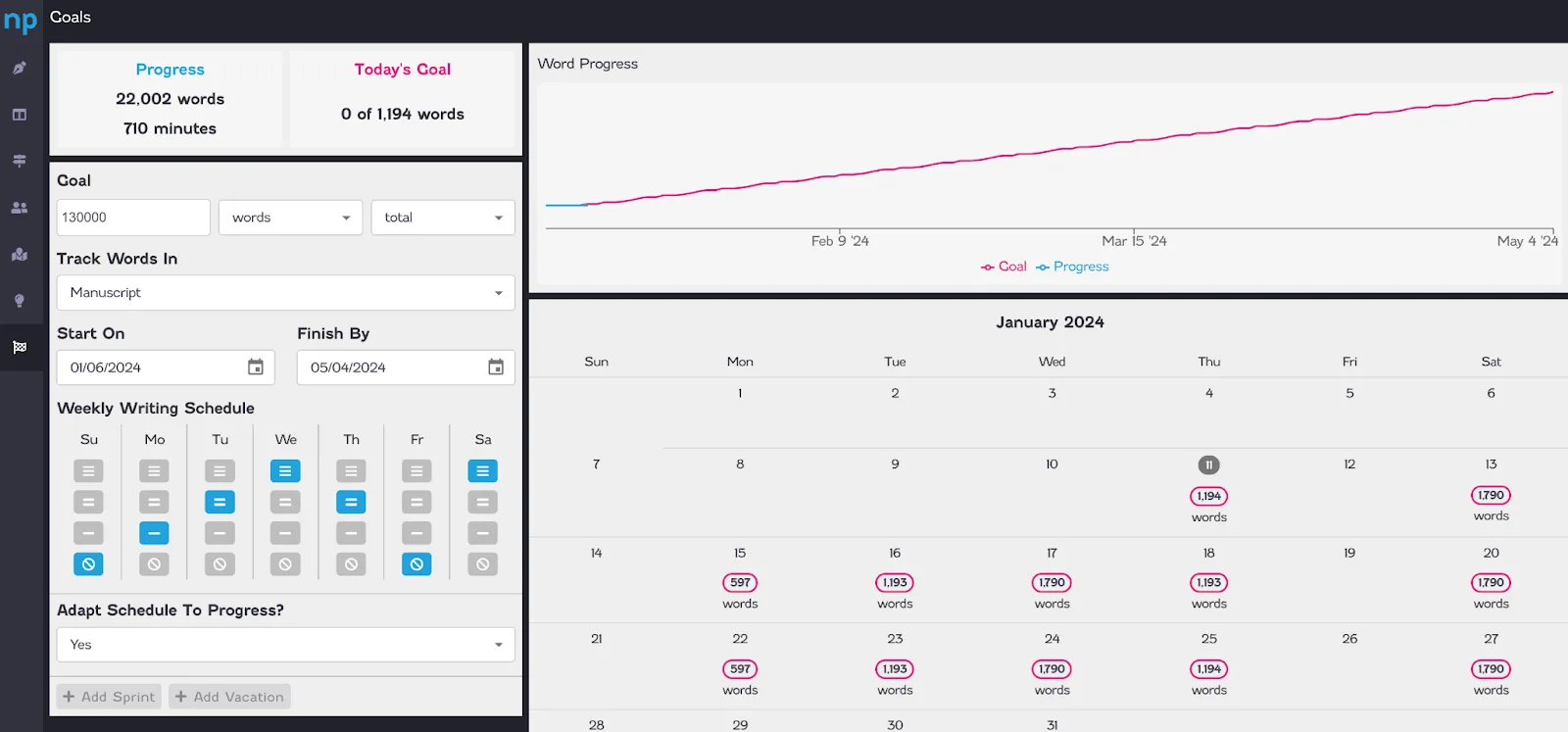How to Write a Romance Novel: 6 Stages, Explained
Bella Rose Emmorey
book editor, rogue behaviorist, digital marketer, writer, brand builder, plant aunt, and cheese enthusiast.
You’ll find a ton of resources online for learning how to write a romance novel. All of them will likely give you something you can use to add to your story. I’m going to give you basically all the tools you need to:
- Come up with ideas
- Plug them in to a structure that works
- Do both of these with originality so you’re not just pumping and dumping the same idea people have written a thousand times before
I’ll be using a 3-act structure, but expanding a bit beyond it.
Stage 1: Come Up With a Romance Novel Idea (or five)
The idea, or premise, of a story is what will ultimately sell it. The back blurb will tell people who the characters are and what the story is about.
The process for coming up with a romance idea is different for everyone. You might already have an idea! If so, take that and continue to the second stage. If not, no worries.
A good exercise to try is to take a romance subgenre, a romance category, and a trope and mix them together. This will give you a premise to work from, or at least get the wheels turning.
A $ romance subgenre$ is what it sounds like, a subgenre within the overarching genre of romance. The category is sort of like a subgenre of a subgenre, and sometimes also includes a trope.
The difference can be found when searching romance on Amazon. Click on the Romance category, then view the subgenres listed below them, like this:

TIP: the "Featured Categories" are those that have enough buyers that Amazon has placed them in special locations, so if you want to $ write to market$ , these are poppin’ subgenres to write in.
From here, you’ll click on a subgenre and take a look at the sidebar for additional filtering options. These are often a mixture of popular categories and tropes.

Now, pick a trope. There are so many in the romance genre, and this $ list of popular romance tropes$ will give you ideas. Put them all together! This guide for $ using romance tropes$ is also super helpful.
For example, if I were to spitball a romance idea, I’d go with:

Stage 2: Refine Characters
The premise will do some of the work for you. We already know that we have two characters who are pirates. One might actually not be a pirate and is learning to become one. That does a lot for our character development.
But now you have to drill into who these characters are.
As always, I like to recommend giving them traits that might make it seem like they wouldn’t get along. Anything that gets a potential reader thinking about the story’s conflict will intrigue them to buy and read the story.
Keep in mind that they do also have to work and the attraction has to be real, so find a way to balance those elements. This is the area you can really get creative and come up with unique characters.
Here are some things to think about when crafting romance characters:
- Do they have any secrets they’re keeping?
- What are some contradicting traits?
- What job do they have–the more specific and unusual, the better?
- Where did they grow up?
- What were their parents like, if they had any?
- What customs are common among their gender?
- What subconscious “rules” do they believe they need to follow?
- What is a core belief they have about themselves?
- What’s a core belief they have about other people?
These will help get you thinking of your characters as people, and shaping them based on it will help create more interesting dynamics.
Stage 3: Choose the Key Moments
The key moments in a romance novel are the ones in which we see the romance evolve. This isn’t an official term, but I’ve found it so helpful to have 5-9 guiding scenes to shape the romance around because it makes plotting that much easier. These are common occurrences in romances in order to create the "will they won’t they" effect that keeps readers engaged.
When you have these points set, you’ll just bridge them together when plotting, and the process is much easier.
Here are the key moments and what to include in them:
- Meet-cute: Also known as an inciting incident, it’s the classic event in which the two main love interests cross paths. It may not be completely clear they’re interested in one another just yet, but it triggers the events of the story. Sometimes, the characters already know each other, like in The Hating Game, so the inciting incident would be different.
- Initial interest: Sometimes the characters know they like each other right away, as is the case in romcoms like The Wedding Planner. If not, there’s usually a moment soon after they meet where the attraction becomes obvious and either both or one of them acknowledges it.
- Withdraw: For whatever reason, the romance doesn’t work, and either one or both of the characters denies feelings, chooses to not be with them, or are kept apart for other reasons. In The Hating Game, they’re kept apart because of an old understanding as well as competing for the same job.
- Increased intimacy: Despite their resolution to be apart, the characters find themselves deepening their connection. In The Holidate, the characters end up spending holidays together, and after a time, they have fun and divulge their histories to one another. Basically, the characters get to know each other on deeper levels that showcase to both the character and the reader that they would work well together in a romantic relationship.
- A change in the dynamic: After intimacy increases, new information is unveiled or the characters start to see each other in a new light. This is a change to their relationship dynamic in many ways, usually for the better. Something happens that makes them see each other as romantic interests instead of whatever they were before. In The Hating Game, Lucy gets sick and and Josh has to take care of her, taking their relationship to a different place. In the first Bridgerton story with Daphne and the Duke, they touch hands while staring at a beautiful painting—one that was the Duke’s mother’s favorite. This moment is one in which both acknowledge there is something more happening.
- Maximum intimacy: Bow-chicka-wow-wow! Or the equivalent depending on the type of romance you’re telling. In Bridgerton, this would be when the Duke kisses Daphne, or she kisses him. Whoever initiated it, they are both big fans of it and it’s the moment where they can never go back to how they were before.
- Falling out: The reasons for not being together rear its head, and their fears are on the horizon. In Bridgerton, the reason the Duke won’t be with Daphne is because she wants children and he has made an oath to never have them. Therefore, he denies marrying her, despite Daphne’s brother witnessing their less-than-a-romp (which in that time period means they must marry). So they have a falling out. In Holidate, the couple hooks up, but Jackson is quickly ushered out of the apartment afterward because of Sloane’s self-esteem and commitment issues, which have been foreshadowed in all the talks about her ex having cheated.
- Big gesture: Someone has to make a gesture for them to come back together. Usually, whoever is “at fault” for the falling out will have some making up to do. Notably, this is a result of the character development as well. They can’t fully be together until they’ve reconciled the problem. Which means in Bridgerton, this hasn’t happened until after they’re married and have been doing the deed for some time. In Holidate, Sloane gets up on a stage at the mall to get Jackson’s attention and apologizes.
- Coming together: Now that they’ve dealt with the reasons keeping them apart, they can come together and be happy, finally.
Here’s a list of fun, playful, or forced intimacy ideas you can use (that are beloved moments in many romance stories) for a few of the moments above:
- Food fight (either aggressive, or fun/romantic)
- Nurse (one gets sick and the other must help)
- End up touching one another in more intimate ways (brushing hands in the car, getting eyelash off cheek, etc.)
- One is hiding from someone and the other finds them to hide out together
- Love interest acts as a hero and saves the main character in some way
- Swimming (pool, pond, without clothes)
- Colliding/falling on top of each other during activity
Stage 4: Plot & Outline
Take the key moments from before, and place them in these parts. Plotting is up to you. The events that take a character to and from each moment are the job of a creative writer. Keep your subgenre and category in mind, along with the tropes you’re using.
Introduction - Meet-cute + Initial interest
This is where we meet the main character, usually going about their everyday life. We get a sense for who they are, what their goals are, and how they meet the love interest (the meet-cute).
There’s a craft to $ starting a romance novel$ that helps get readers interested. We want to know the tone upfront, and much of that has to do with the viewpoint character, because many romances are written in first person.
Remember that "meet-cute" doesn’t necessarily mean things go well or that the characters know they’re interested. It’s just the moment we meet the love interest, and is often a part of the overall inciting incident.
Part 1 - Withdraw + Increased Intimacy
Part 1 is when we escalate the plot in general. Meaning, the main character moves forward after the inciting incident. Learning how to write a romance novel includes figuring out how to progress during this part while furthering the love interest’s intimacy.
Pull this from your key moments!
Part 2 - A Change + Maximum Intimacy + Falling Out
Something happens at the end of Part 1 that creates a change in the plot, usually for both the romance and the subplot it’s contained in. The dynamic between them changes. Take a look at your key moments!
In this part, there should be a series of the main character succeeding and then failing at what they’re trying to do. We’ll get a sense of progression toward their goal, but not an easy one.
At the end of Part 2, the main character should be at their lowest. There’s a falling out in the romance and their other goal is suddenly lost. This is all due to the character’s flaws and weaknesses.
Meaning, in order to reconcile and have a happily-ever-after, they have to face their issues and fix them.
Part 3 - Reconciliation
Now it’s time to fix their mistakes and take action toward their goal. Oftentimes, this is done without the love interest. We see the main character overcoming their problems and succeeding on their own.
Only then do they realize they have to make things right or allow themselves to love and be loved. This is the climax moment. When they take action toward being with their love interest, it’s the climax.
Resolution / Hook
Of course, you have the falling action. The outcome of the lovers coming together. As a result of the reconciliation, information comes about that leads to a potential for another book and plot, if you’re writing a series.
Either way, you must end with a "happily ever after" unless you write tragedy. Romance readers will be very, very angry if you’ve set up for a standard romance and the couple is not together at the end.
Stage 5: Write Your Novel
This is often the hardest for everyone. It takes sitting down and doing the work, truly. Whatever you need to make that happen, like a $ writing software$ or progress tracker, do it.
You can always edit, but you can’t edit something that isn’t there.
Once you have your book plotted, especially if you use something where you can jot down notes for each scene, it should be as easy as opening the software and getting to work. It’s a bonus if you can also track your progress and use your brain chemistry to your advantage (the brain loves a good dopamine hit from hitting goals).

There’s only so much advice one can give to actually write the book. You’ll have to discover your own process and your own voice.
Stage 6: Beta Feedback
Of course, the beta reading stage isn’t the last, but it is incredibly important. After beta readers, you will have to self-edit, revise, get a professional edit, and all that good stuff $ before publishing$ . But! At this point, the novel is written!
Get some thoughts from people who read romance so you can make tweaks and edits that work for the genre!
Learning how to write a romance novel is mostly about understanding the key moments and plotting around them. They fall in love in the end, which is a great guaranteed ending point you can use and work backward from there.
Like what you're reading?
Join other authors like you in NovelPad’s free writing community!
Join the communitySimilar Posts
What File Formats are Accepted by Kindle Direct Publishing?
File types for ebooks, paperbacks, and hardbacks on Amazon's KDP.
Ollie Ander
Is probably just a couple cats in a trench-coat—the hair shedding and sunlight napping are highly suspect.
What is a ghazal? The essence of emotion in poetry
Definition, examples, and history of the ghazal poem.
Hannah Lee Kidder
NovelPad Author
How long is a fantasy book? Words, pages, chapters, scenes, & prologues
What should wordcount goals look like for a fantasy novel?
S.R. Beaston
Crafty with words, wit, and wisdom, just add caffeine to make it more interesting.
How To Write Strong Atmosphere In Stories
7 best tips for creating strong atmosphere in your writing.
Hannah Lee Kidder
NovelPad Author
How long is a Science Fiction Book?
How many words, chapters, and pages should be in your sci-fi novel?
Ollie Ander
Is probably just a couple cats in a trench-coat—the hair shedding and sunlight napping are highly suspect.
The Writer’s Resolution Guide 2024
Goal ideas and strategies for your new writing year.
Sage Kay
Writer, reader, outfit repeater.